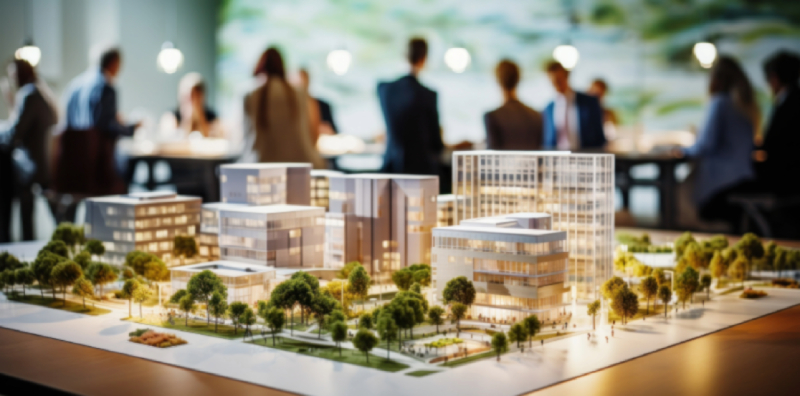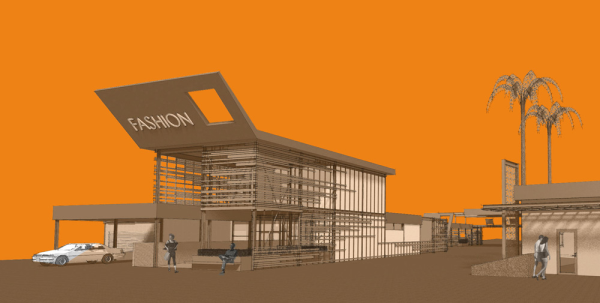Discover the Ingenious Providers Provided by Commercial Architects for Your Following Project
Commercial architects play a crucial function fit the constructed environment. They mix functionality with aesthetic allure, creating rooms that reverberate with brand identity. These experts employ cutting-edge style solutions, sustainable techniques, and advanced technologies to enhance user experiences. Their collective strategy assurances placement with customer visions and functional needs. The extent of their services commonly prolongs beyond style. The next steps in comprehending how these architects browse complicated job demands might shock you.
Understanding the Function of Commercial Architects
The function of industrial architects might vary depending on the particular job, their primary function revolves around creating useful and cosmetically attractive areas for services. These experts are charged with comprehending the distinct requirements of each customer, whether it be a store, workplace structure, or commercial facility. They conduct thorough website evaluations and collaborate with stakeholders to guarantee that the layout straightens with business purposes and brand identity.Commercial architects also browse numerous governing needs, safeguarding conformity with zoning legislations and building codes. Their proficiency encompasses developing lasting styles that advertise energy efficiency and ecological duty. Furthermore, they manage the job's timeline and budget, collaborating with specialists and engineers throughout the construction procedure. By mixing creativity with technological knowledge, business architects play a crucial function in changing theoretical ideas right into substantial truths, inevitably enhancing the performance and appeal of industrial rooms.
Innovative Layout Solutions for Distinct Areas
As commercial areas progressively require distinctiveness to stand out in open markets, ingenious style solutions have become essential for architects. These specialists utilize their imagination and technological expertise to craft special settings that mirror brand identity and improve customer experience. By incorporating advanced modern technology and products, commercial architects can transform common areas right into charming places that engage consumers and motivate employees.Architects employ various strategies, such as adaptive reuse, which revitalizes existing structures while preserving their historical significance. They additionally discover unique designs and multifunctional areas that accommodate varied requirements, making sure adaptability for future growth.Furthermore, the unification of biophilic design-- bringing nature inside your home-- creates inviting atmospheres that advertise health - commercial architects. This interest to detail in innovative design not just addresses visual worries however likewise promotes neighborhood and collaboration. Ultimately, these tailored remedies permit organizations to prosper in an ever-evolving landscape, setting them apart from rivals
Lasting Design Practices
Sustainable architecture practices have become a pivotal emphasis for commercial architects seeking to develop impactful styles that reverberate with ecological stewardship. These practices prioritize making use of eco-friendly resources, power effectiveness, and minimal waste, showing a commitment to reducing the environmental footprint of structures. Architects incorporate products that are sustainably sourced or recycled, ensuring that building and construction approaches line up with ecological principles.Furthermore, the assimilation of environment-friendly roofings and walls improves biodiversity while improving power performance. Reliable water administration systems, such as rain harvesting, add to sustainability by conserving water sources. Natural ventilation and daylighting approaches are likewise utilized to optimize interior atmospheres, minimizing reliance on fabricated heating and lights.
Integrating Technology in Architectural Designs
An enhancing variety of industrial architects are embracing technology as a transformative aspect in building design. By leveraging advanced software devices such as Building Information Modeling (BIM), architects can develop detailed 3D representations of projects, enabling boosted visualization and partnership among stakeholders. This modern technology facilitates real-time modifications, lessening mistakes and improving the style process.Additionally, architects are integrating smart structure technologies into their designs, which enhance power efficiency and occupant convenience. Attributes such as automated lights, climate control, and protection systems can be flawlessly integrated, promoting sustainable practices and decreasing operational costs.The usage of digital and enhanced truth also allows customers to experience layouts prior to building and construction starts, giving important insights right into spatial partnerships and visual go to website options. Eventually, the combination of technology in building layouts not only promotes development however likewise guarantees that tasks are carried out with precision and straightened with contemporary needs.

Task Management and Coordination Solutions
Efficient task management and sychronisation services are crucial for the effective execution of business building tasks. These solutions guarantee that all aspects of a project, from initial layout to last building, are flawlessly incorporated. Commercial architects play a significant function in working with in between numerous stakeholders, consisting of customers, service providers, and vendors, to keep clear interaction and positioning on project goals.By executing structured methodologies, architects can take care of timelines, spending plans, and resources efficiently, reducing delays and cost overruns. They make use of task administration software application and tools to track progress, take care of documents, and promote cooperation among group members.Additionally, these solutions include risk analysis and mitigation techniques, validating potential difficulties are determined and addressed proactively. The result is a structured procedure that boosts general job performance and high quality, ultimately bring about an effective outcome that fulfills the customer's vision and expectations.
Regulatory Compliance and Zoning Assistance
Efficient regulative conformity and zoning support are important for the success of any kind of industrial project. Architects have to possess a deep understanding of regional regulations and zoning regulations to guide customers through the complexities of the authorization procedure. This proficiency not just guarantees adherence to legal needs but likewise aids maximize project design and capability.
Navigating Local Laws
How can commercial architects ensure their styles line up with neighborhood laws? By remaining well-informed regarding the ever-evolving landscape of building regulations and neighborhood statutes, architects play a crucial duty in guaranteeing conformity. They conduct thorough research study to comprehend the details regulations regulating materials, safety standards, and construction methods applicable per project. Working together carefully with local authorities, commercial architects can steer via the complexities of regulatory frameworks efficiently. They also facilitate necessary authorizations and examinations, enhancing the approval process. This aggressive strategy not just minimizes possible legal problems however also boosts project performance. Eventually, their expertise in steering local laws equips customers to understand their vision while sticking to all required criteria and guidelines.
Zoning Regulation Competence
Zoning law experience is vital for commercial architects steering via the complexities of land usage regulations. These architects possess comprehensive understanding of neighborhood zoning codes, which regulate residential property development, land usage, and building specs. By comprehending these laws, they assist customers browse the frequently detailed authorization processes needed for building and construction projects. Their know-how assurances compliance with zoning laws, lessening the threat of job delays or lawful complications.Additionally, business architects supply important assistance in obtaining essential licenses and variations, helping with smoother interactions with local authorities. They likewise use tactical recommendations to optimize site design my sources and optimize the capacity of a residential property while adhering to zoning restrictions. Ultimately, their zoning law proficiency plays a critical duty in the successful realization of commercial projects.
Collective Methods With Customers and Stakeholders
Successful business style pivots on the capability to foster strong partnership with customers and stakeholders throughout the layout process - commercial architects. Architects take part in open discussions, guaranteeing that all parties' visions and needs are integrated into the task. This joint technique begins in the initial stages, where architects carry out workshops and brainstorming sessions, permitting customers to articulate their objectives and concerns.Stakeholder input is similarly website link crucial; architects usually organize meetings with area members, local federal governments, and other relevant entities to collect diverse point of views. By employing visualization devices, such as 3D modeling, architects help with better understanding and communication.This repetitive feedback procedure not only boosts style quality but additionally develops trust fund, resulting in even more successful end results. Ultimately, the joint viewpoint of business architects transforms concepts into practical spaces that mirror the goals of customers and the wider community, ensuring an unified relationship throughout the job lifecycle

Frequently Asked Questions
What Is the Typical Timeline for a Business Style Project?
The typical timeline for a business style job varies, generally covering 6 to 18 months. Elements influencing this period consist of project intricacy, governing authorizations, and client responsiveness, influencing each stage from style to construction conclusion.
How Do Commercial Architects Charge for Their Providers?
Commercial architects typically bill based on task range, complexity, and dimension. Typical fee frameworks include per hour prices, dealt with costs, or percentage-based charges calculated from the overall construction cost, ensuring transparency and placement with client expectations.
Can Commercial Architects Assist With Inside Style?
Commercial architects can without a doubt help with interior layout, integrating capability and looks. Their competence guarantees natural spaces that line up with building vision, enhancing customer experience while satisfying regulative needs and client purposes via ingenious style solutions.
What Kinds of Clients Do Commercial Architects Generally Function With?
Commercial architects typically team up with varied clients, consisting of companies, federal government entities, universities, and charitable organizations (commercial architects). Each client looks for customized building solutions to meet certain useful and visual needs for their tasks and environments
Exactly How Do Commercial Architects Remain Upgraded With Style Fads?
Commercial architects remain upgraded with layout fads via continuous education, attending industry conferences, taking part in expert networks, and investigating emerging innovations. They likewise collaborate with other professionals to gain insights into innovative materials and design methods.